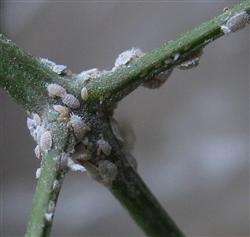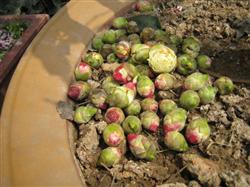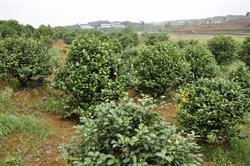How does camellia prevent pests?

How do camellias control insect pests? Please introduce the control methods of the common shell insects on camellia: red wax, cotton blowing, bran shield and tea brown. Red wax: the shell wax of the female adult is strong, first rose red, then purplish red, 3 mm to 4 mm in diameter, navel-shaped at the top, petaloid around, with four white lines. It occurs one generation a year, and the peak period of damage is usually from the middle of May to the first and middle of June. Cotton blowing medium: the female adult is orange-red, oval, 5 mm to 7 mm long, raised abaxially, all densely small black hairs, and covered with white wax. White cotton wax filaments are secreted when spawning, white waxy oocysts are attached to the abdomen, and there are 14 to 16 ridged oocysts on the abdomen. There are 2 to 4 generations every year, and all insect states can survive the winter. The occurrence was the most serious from April to June. Bran shield: the female shell is 1.5 mm to 2 mm long, grayish white or gray, and the edge of the shell is yellow or brown. It is named because its shape and color resemble the bran shell. Male mesocarp narrow, nearly parallel on both sides, ca. 1.2 mm, grayish white. There are 2 to 3 generations a year, and nymphs occur in the first and middle of May, the first and middle of July, and from late August to early September, respectively. Tea brown round medium: the female shell is round, 1 mm to 2 mm in diameter, purple-brown or dark brown, waxy thick, central bulge, slightly oblique to the edge, the shell surface is slightly like a hat-shaped, two shell points, located in the center of the shell, golden yellow or reddish brown. Male mesocarp long oval or ovate, shell point near one end. Most of the insects overwintered as second instar nymphs. The scale insects usually gather on the twigs and leaves, and the back of the leaves is the most parasitic. It uses its specially constructed piercing mouthparts to suck the sap from the stems and leaves of camellias, resulting in withered and yellow branches and leaves of camellias, leaves falling early, and even the whole plant dying. Its excreta is rich in sugar liquid, which often induces serious coal fouling disease, resulting in poor growth or death of plants. The insect is most likely to occur and spread under the conditions of high temperature, high humidity and poor ventilation. Control method: when ① finds that there are shell insects on individual branches or leaves, it can be gently brushed off with a soft brush or sticked with transparent tape. ② used 0.5 degree stone sulfur mixture or turpentine mixture to kill overwintering nymphs in winter. ③ grasps the egg during the peak incubation period, and the best time is in the spring incubation period. When the shell has not yet been formed on the surface of the worm, it is easier to kill with medicament; it can spray 1000 times of omethoate EC, 2500 times of 2.5% deltamethrin EC and 1000 times of dichlorvos EC, and the insecticidal effect is good. During the formation of scale insects, ④ can spray 1500 times of EC, because of its strong permeability, the control effect is also very good; or in the early stage of the occurrence of scale insects, use 25% buprofezin (mainly containing buprofezin) wettable powder 1500 times to 2000 times liquid spray, depending on the condition of the insect every 15 days, the effect is good. Click to get more camellia planting techniques click to get more flowers and trees planting techniques
- Prev

How to prevent Camellia from falling buds and scorched flowers
How can camellia prevent falling buds and scorched flowers? Please introduce the prevention and control methods of camellia with falling buds and scorched flowers, which will reduce the number of flowers, premature senescence of flowers, shorten flowering period and reduce ornamental value. The main reasons are as follows. One: the impact of drought and waterlogging. Camellia is fleshy root, aerobic, like to be moist.
- Next

How are camellias cultivated?
How are camellias cultivated? Please give an introduction to camellia semi-shade plants, suitable for scattered light growth, fear of direct light exposure, seedlings need shade. However, long-term shade is unfavorable to the growth of camellia, with thin leaves and few flowers, which affects the ornamental value. Adult plants need more light to facilitate flower bud formation and flowering.
Related
- Fuxing push coffee new agricultural production and marketing class: lack of small-scale processing plants
- Jujube rice field leisure farm deep ploughing Yilan for five years to create a space for organic food and play
- Nongyu Farm-A trial of organic papaya for brave women with advanced technology
- Four points for attention in the prevention and control of diseases and insect pests of edible fungi
- How to add nutrient solution to Edible Fungi
- Is there any good way to control edible fungus mites?
- Open Inoculation Technology of Edible Fungi
- Is there any clever way to use fertilizer for edible fungus in winter?
- What agents are used to kill the pathogens of edible fungi in the mushroom shed?
- Rapid drying of Edible Fungi

